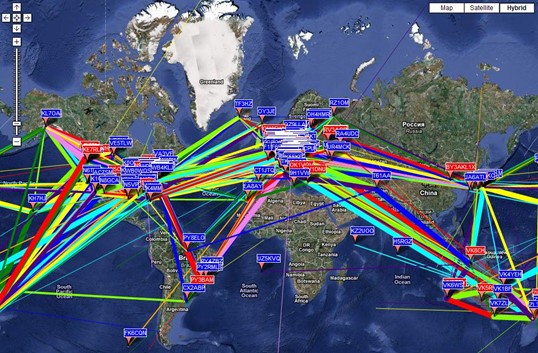Let’s start with the basics:
- WSPR stands for Weak Signal Propagation Reporter—a protocol implemented in a computer program used for weak-signal radio communication between hams.
- It lets users send and receive low-power transmissions for testing MF and HF propagation paths.
- Pronounced “whisper,” WSPR was designed and written initially by Nobel Prize winner and FT8 creator Joe Taylor, K1JT.
- The software code is now open source and updated by a small team.
If you’ve wondered if a band is open, WSPR can tell you.

As noted by Joe Taylor, K1JT, and Bruce Walker, W1BW, in their November 2010 QST article, “WSPRing Around the World,” WSPR transmits and receives but does not support normal types of on-the-air conversation. It sends and receives specially coded, beacon-like transmissions which establish whether particular propagation paths are open. Transmissions convey a callsign, station location, and power level using a compressed data format with strong forward error correction (FEC) and narrow-band, four-tone frequency-shift-keying (FSK).
K1JT notes that FEC greatly improves chances of copy and reduces errors to an extremely low rate. The signal bandwidth is only 6 Hz. Combined with randomized time-sharing, this assures that dozens of WSPR signals can fit into a 200 Hz segment of each amateur band. The WSPR protocol is effective at signal-to-noise ratios as low as -28 dB in a 2500 Hz bandwidth, about 10 to 15 dB below the threshold of audibility. On most bands, typical WSPR power levels are 5W or less (sometimes significantly less).
As the protocol has evolved, enhancements to WSPR have included upgrades in its decoder’s sensitivity, improved ability to handle larger numbers of signals in crowded sub-bands, and better detection of false decodes.
To take advantage of WSPR on the amateur bands, you’ll need a radio (one with USB audio is preferred) and a computer with an Internet connection. As users have pointed out online, you don’t need to transmit. Your system can still report what it hears.
The standard message is <callsign> + <4 character locator> + <dBm transmit power>. For example, “KE8FMJ EM89 37” is a signal from station KE8FMJ in Maidenhead grid cell “EM89,” sending 37 dBm, or about 5.0W.
Questions? Share them in the comments below or email me at KE8FMJ@gmail.com.

